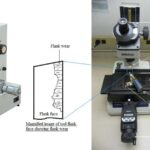Molecular biology 5 Views 1 Answers
Sourav PanLv 9September 18, 2024
Which statement about DNA sequencing is false? a. The method developed by Sanger in the 1970s involved chemical modifications of bases b. The method developed by Sanger in the 1970s involved breaking up the DNA molecule into numerous small fragments. C_ High-throughput sequencing is generally faster than Sanger sequencing: d_ none of these statements are false
Which statement about DNA sequencing is false? a. The method developed by Sanger in the 1970s involved chemical modifications of bases b. The method developed by Sanger in the 1970s involved breaking up the DNA molecule into numerous small fragments. C_ High-throughput sequencing is generally faster than Sanger sequencing: d_ none of these statements are false
Please login to save the post
Please login to submit an answer.
Sourav PanLv 9May 15, 2025
The false statement is:
b. The method developed by Sanger in the 1970s involved breaking up the DNA molecule into numerous small fragments.
Explanation:
- a. The method developed by Sanger in the 1970s involved chemical modifications of bases: This is true. Sanger sequencing used dideoxynucleotides (ddNTPs) to terminate DNA strand elongation, which are chemically modified versions of normal nucleotides.
- b. The method developed by Sanger in the 1970s involved breaking up the DNA molecule into numerous small fragments: This is false. The original Sanger sequencing method did not involve breaking up DNA into small fragments. Instead, it involved sequencing single DNA fragments, with the use of chain-terminating ddNTPs to produce a set of fragments of varying lengths.
- c. High-throughput sequencing is generally faster than Sanger sequencing: This is true. High-throughput sequencing technologies can process millions of DNA sequences simultaneously, making them faster and more efficient than the Sanger method, which sequences one fragment at a time.
- d. none of these statements are false: This is not correct because statement b is false.
0
0 likes
- Share on Facebook
- Share on Twitter
- Share on LinkedIn
0 found this helpful out of 0 votes
Helpful: 0%
Helpful: 0%
Was this page helpful?




